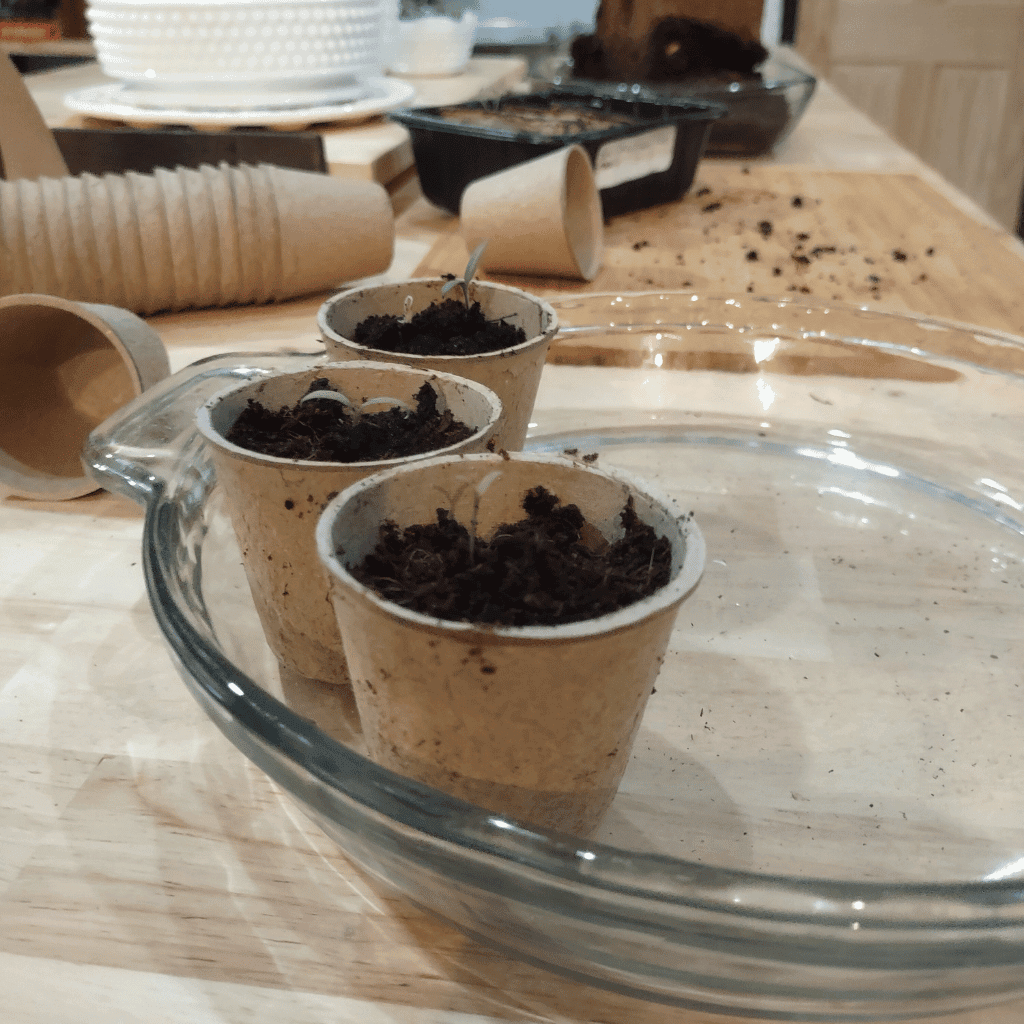A basic gardening tip for germinating is you should test your seed inventory before planting.
This was something I have always done in the past, but for whatever
reason when I started seeds without stress back in February, I skipped
this step.
So, I am eating my own advice and recently found myself looking at dirt pods that didn’t germinate.
I came to the conclusion that most of my
seeds were duds and I would need to start over.
I also decided in the future I would wait to begin until the first week of March.
Does One Give Up?
Over the last three years of not gardening, it
occurred to me that during our relocation I overlooked keeping
my seed stash in a cool place. The
truth, I had too much going on and when things are out of sight and out of mind,
I can easily forget details.
Does one give up at this point? Absolutely not and the best course of action is to test your seed inventory. That was my plan the second time around in addition to picking up some new herb packets.
I first transplanted the seedlings that did germinate because it wasn't a 100% loss. Then I decreased my inventory keeping with my favorites knowing that I would probably have to replace more later.
All of this was okay, things happen for a reason and
honestly, I’m just thankful to have a garden.
Testing Seeds in Water
Moving forward I decided to always test seeds, even if they are a brand-new purchase. This is a very simple process and
it’s a matter of getting a clean dish; I chose white ceramic because you have
a clear visual of what’s taking place.
Then fill the dish with water and add your seeds. If they sink, you can expect them to
germinate. If they float that means they
are duds. Take a teaspoon, remove the
floaters and then dump the water without removing the sinkers.
Now you can begin planting in seed trays or start directly in the
ground if freezing temperatures have expired.
Most seeds will quickly germinate in under 7-10 days and transplanting
can begin when they get their second or third set of leaves.
The important thing to remember is you don’t quit because
you experienced a flop. Learn from that moment and keep moving forward. This approach could be applied to so many
things in life and the one who continues to rise for good keeps standing.
So, as I write this message, I have also been working on my
Garden Up Green book. I’m happy to
report I recently finished the herb chapter which was very long. On a side note, my basil,
parsley, and cilantro have germinated.
I’m currently writing the flower chapter and hope to
complete it later this week. This will
bring me to the next that I have titled “Germinate, Transplant and Propagate”
that last one is my favorite activity.
If you were a GUG reader then you know I was always taking cuttings,
dividing plants and growing my inventory wherever I was rooted.
I am excited to share that progress is being made on my new book and with
day light savings finally here I should have no problem reaching my goals. It is all about having a focus and if you are
gardening this year do not hesitate to test your seeds before planting.
Encouraging goodness,
Carole West


